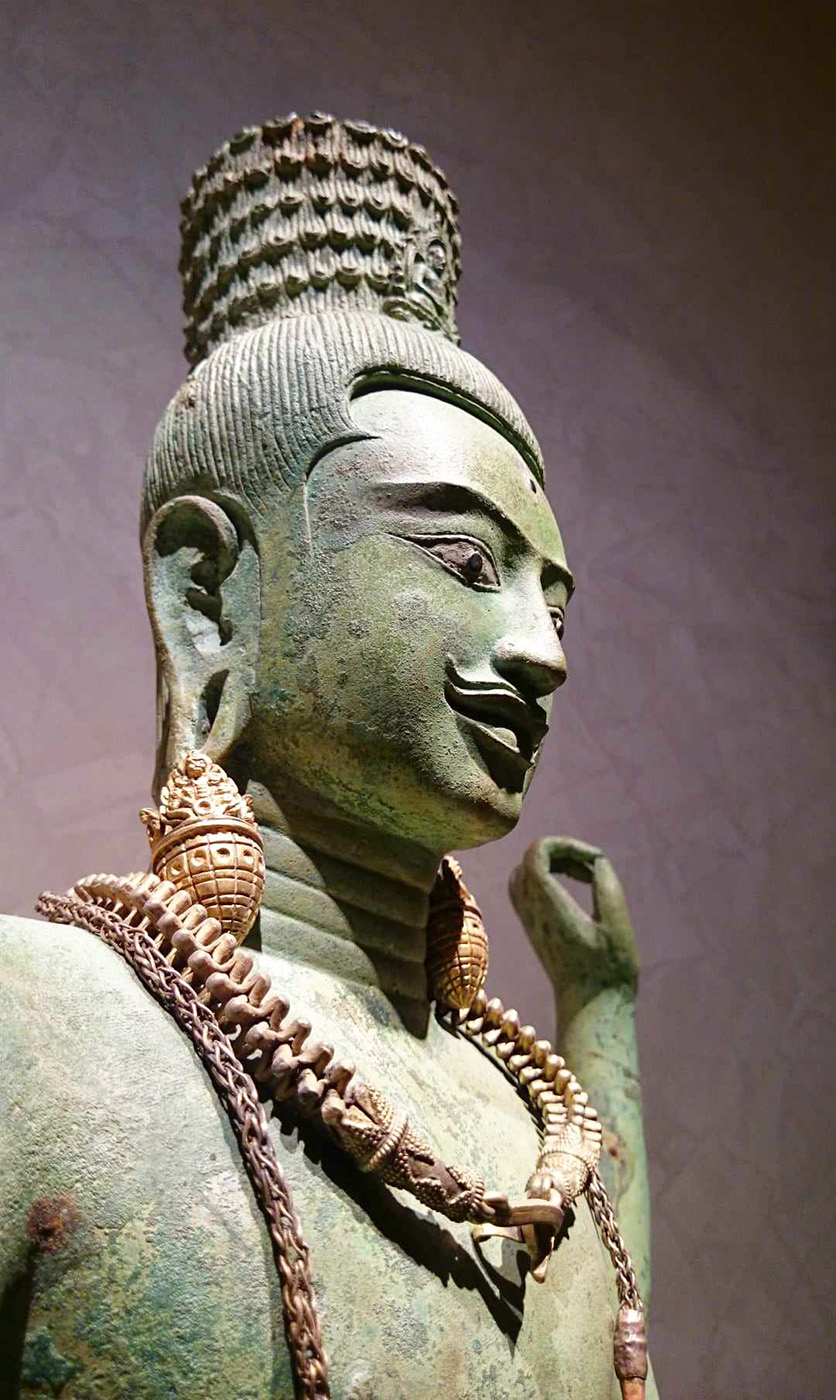A second bronze from Douglas Latchford’s personal hoard of Khmer art is a special piece, according to the British collector-dealer himself. In an interview with Apollo magazine in 2008, he pointed to an illustration of an outstanding bronze Avalokiteshvara in Adoration and Glory, a book on Khmer art he wrote with Emma Bunker, which was published four years earlier. 'That is my best piece, it is in the bedroom. It was sold to me by a dealer in Hong Kong. It was wrapped in jute. When I sent it to London to be cleaned and mounted, I had the jute carbon dated to the 8/9th century.’ For Latchford, clearly this art piece was too special to sell, unlike the thousands of other sculptures that passed through his hands during the six decades that he masterminded his smuggling operation, until his death in 2020. Though the bronze was good enough for him to highlight in his 2004 book, he shied away from admitting he owned the piece and even in his 2011 book, Khmer Bronzes, said it was owned by Skanda Trust. That was an own goal, having boasted to the magazine reporter that he personally owned it in 2008. Whoops! Half a dozen of the pictures posted here were taken in Latchford’s Mayfair-London apartment in 2014, with two necklaces, earrings and bracelets adorning the figure, the rest of the photographs are from his self-published books. The gold Naga-earrings and the two gold bracelets that decorate the figure have already found their way back to Cambodia.
The book, Khmer Bronzes: New Interpretations of the Past, was published in 2011 and authored by Latchford and Emma Bunker, and in which no less than 80 bronze pieces in the catalogue were accredited to the Skanda Trust collection. The ultra-secretive Trust in fact turned out to be Latchford’s own offshore trust in Jersey, and was subsequently exposed by the Pandora Papers, which were obtained by the International Consortium of Investigative Journalists and shared with The Washington Post and other media outlets around the globe in late 2021, a year after Latchford’s death. His daughter, Julia Copleston, has promised to return his private collection of stone, bronze and jewelry artifacts to Cambodia, some of which have already been sent back. Another delivery of 70+ artifacts from Latchford’s family is expected anytime soon. Latchford’s fascination with Khmer art began in 1955 with his first purchase in Bangkok, which took him from that first piece to organizing the plundering of Cambodia’s sacred temples and subsequent trafficking of thousands of Khmer artworks in stone and bronze, around the world to private collectors, museums and auction houses.
The detailed description of the bronze Avalokiteshvara, usually termed Lokeshvara in Cambodia, in Adoration and Glory is as follows: This extraordinary four-armed image represents a highwater mark in early Khmer bronze casting. A small image of a seated Amitabha Buddha on a lotus-petal throne within a scalloped niche adorns the front of the jatamukuta (crown of hair), identifying this image as the bodhisattva Avalokiteshvara. All four hands are performing the vitarka mudra, a teaching gesture in which the thumb and forefinger touch. The eyebrows form an almost continuous line across the forehead, three indented beauty lines mark the neck, and raised dots within intaglio circles indicate the nipples. The deity’s forehead is marked with a third eye, an unusual bodhisattva-feature that occurs in Khmer sacred sculpture. A moustache and eyes inlaid with silver and obsidian further distinguish the face. A sampot can kpin with a scarf around the waist, the typical Khmer male garment, covers the figure’s body below the waist to the knees. The chignon formed by rows of looped hair is a slightly later version of the late-ninth-century style of Preah Ko. The sampot is arranged in the late-ninth-century Bakheng manner, in which the outer front pleated fishtail panel of the scarf is longer and overlaps the shorter inside panel.
Two round and tapered tangs project from the bottom of the heels. Their function is to secure the object in a base. They probably originally served as sprues for pouring molten metal into the mold during the casting process, since the piece was lost-wax cast upside down. The wax model had a wax bridge connecting the feet that served as a gate (runner) and stabilized the legs during the casting process, resulting in a bronze strut between the feet on the finished bronze. The stubs of this strut are visible on the inside of each ankle on the present bronze. The figure is hollow with a clay core; a wrought-iron armature running through the body and down the legs supported the core and the wax model during the casting process. These technical observations indicate a casting tradition that continues the methods used to cast the famous bronze images found at Prasat Hin Khao Plai Bat II on the Korat Plateau. The image was uncovered in northwest Cambodia wrapped in coarse jute fabric, fragments of which still adhere to the surface. A radiocarbon date of the textile (made in 1993) is consistent with the proposed date of manufacture, the end of the ninth century. Rice husks adhering to the left cheek suggest some sort of ritual at the time of burial. [Extract from Adoration and Glory, 2004].Credit By :Andy Brouwer






























0 Comments